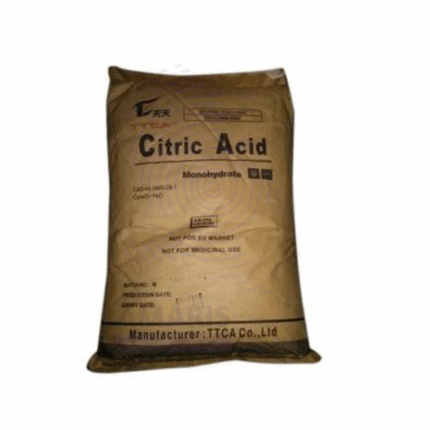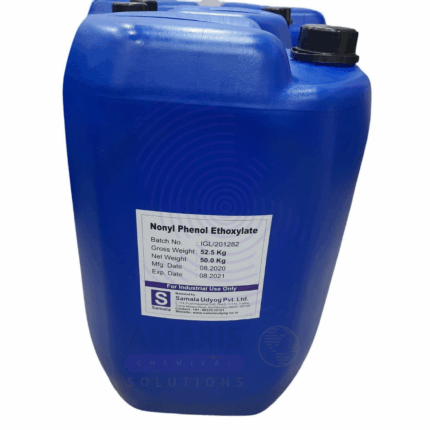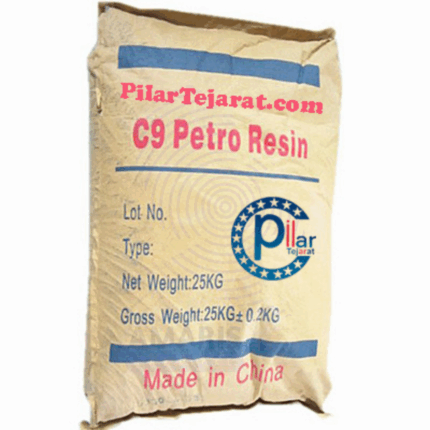
PVC K67
PVC K67 is a general-purpose polyvinyl chloride resin with a K-value of 67, indicating a medium molecular weight suitable for rigid applications. It is a white, free-flowing powder commonly used in the production of rigid PVC products such as pipes, fittings, profiles, and sheets. PVC K67 offers excellent processability, good mechanical strength, chemical resistance, and dimensional stability, making it ideal for a wide range of industrial and construction applications.
- Primary Uses
Building & Construction
- Used in manufacturing rigid pipes for water supply, drainage, and electrical conduit systems.
- Employed in producing window and door profiles, wall panels, and ceiling cladding.
- Utilized in manufacturing fittings, cable ducts, and other rigid structural components.
Industrial Fabrication
- Applied in the production of chemical tanks, linings, and trays due to its chemical resistance.
- Used in industrial ductwork and ventilation systems.
Packaging Industry
- Utilized in rigid film production for thermoformed packaging like trays, blisters, and containers.
- Used in non-food packaging for consumer goods and electronics.
Automotive Applications
- Used in production of rigid trim parts, instrument panel frames, and cable insulation conduits.
Consumer Goods
- Applied in the making of furniture edge bands, display stands, and rigid toys.
Secondary Uses
Medical Devices (Non-flexible components)
- Used in parts of disposable syringes, connectors, and other rigid m
Basic Identification Attributes
- Chemical Name (IUPAC): Poly(chloroethene) or Polyvinyl chloride
- Common/Trade Name: PVC K67
- CAS Number: 9002-86-2
- HS Code: 3904.10.00
- Synonyms: Rigid PVC resin, Suspension PVC
Physical & Chemical Properties
- Physical State: Fine white powder
- Color & Odor: White; odorless
- K-Value: 67 (medium molecular weight)
- Bulk Density: Approx. 0.5 – 0.7 g/cm³
- Solubility: Insoluble in water; soluble in some organic solvents (under heat)
- Thermal Stability: Decomposes above 140–160°C
Safety & Hazard Attributes
- GHS Classification: Not classified as hazardous in solid form; may emit harmful gases when heated
- Toxicity: Low toxicity; avoid inhalation of dust or combustion fumes
- Exposure Limits: Use appropriate controls when handling fine powder
Storage & Handling Attributes
- Storage Conditions: Store in dry, cool, well-ventilated areas away from heat and ignition sources
- Container Type: Bags (typically 25 kg), bulk bags, or silo storage
- Shelf Life: Indefinite if stored in optimal conditions
- Handling Precautions: Minimize dust generation; use dust extraction systems during processing
Regulatory & Compliance Attributes
- Complies with standards for rigid PVC use in construction, packaging, and general goods
- May conform to RoHS, REACH, and FDA standards for certain applications (dependent on additives used)
Environmental & Health Impact
- Biodegradability: Not biodegradable
- Ecotoxicity: Low in stable form; avoid environmental release of fine dust
- Bioaccumulation: Not expected
Safety Handling Precautions
- PPE Required: Use dust mask or respirator, gloves, goggles, and protective clothing
- Handling Guidelines: Avoid dust formation; ensure local ventilation during processing
- Storage Measures: Keep containers tightly closed and stored in a dry environment
First Aid Measures
- Inhalation: Move to fresh air; seek medical attention if symptoms persist
- Skin Contact: Wash with soap and water; seek attention for persistent irritation
- Eye Contact: Rinse thoroughly with water for at least 15 minutes; consult a doctor
- Ingestion: Rinse mouth; do not induce vomiting; seek medical help
Firefighting Measures
- Fire Hazards: Non-flammable as a powder; decomposes under heat to release HCl and other toxic gases
- Extinguishing Media: Foam, dry chemical, water spray, or CO₂
- Special Precautions: Wear full protective equipment and self-contained breathing apparatus
- Hazardous Combustion Products: Hydrogen chloride gas, carbon monoxide, carbon dioxide, and other chlorinated compounds


 Preservatives(food)
Preservatives(food) Flavor Enhancers
Flavor Enhancers Acidulants
Acidulants Sweeteners
Sweeteners Antioxidants
Antioxidants Colorants(food)
Colorants(food) Nutraceutical Ingredients (food)
Nutraceutical Ingredients (food) Nutrient Supplements
Nutrient Supplements Emulsifiers
Emulsifiers
 Collectors
Collectors Dust Suppressants
Dust Suppressants Explosives and Blasting Agents
Explosives and Blasting Agents Flocculants and Coagulants
Flocculants and Coagulants Frothers
Frothers Leaching Agents
Leaching Agents pH Modifiers
pH Modifiers Precious Metal Extraction Agents
Precious Metal Extraction Agents
 Antioxidants(plastic)
Antioxidants(plastic) Colorants (Pigments, Dyes)
Colorants (Pigments, Dyes) Fillers and Reinforcements
Fillers and Reinforcements Flame Retardants
Flame Retardants Monomers
Monomers Plasticizers
Plasticizers Polymerization Initiators
Polymerization Initiators Stabilizers (UV, Heat)
Stabilizers (UV, Heat)
 Antifoaming Agents
Antifoaming Agents Chelating Agents
Chelating Agents Coagulants and Flocculants
Coagulants and Flocculants Corrosion Inhibitors
Corrosion Inhibitors Disinfectants and Biocides
Disinfectants and Biocides Oxidizing Agents
Oxidizing Agents pH Adjusters
pH Adjusters Scale Inhibitors( water)
Scale Inhibitors( water)
 Antioxidants(cosmetic)
Antioxidants(cosmetic) Emollients
Emollients Fragrances and Essential Oils
Fragrances and Essential Oils Humectants
Humectants Preservatives
Preservatives Surfactants(cosmetic)
Surfactants(cosmetic) Thickeners
Thickeners UV Filters
UV Filters
 Fertilizers
Fertilizers Soil Conditioners
Soil Conditioners Plant Growth Regulators
Plant Growth Regulators Animal Feed Additives
Animal Feed Additives Biostimulants
Biostimulants Pesticides (Herbicides, Insecticides, Fungicides)
Pesticides (Herbicides, Insecticides, Fungicides)
 Active Pharmaceutical Ingredients (APIs)
Active Pharmaceutical Ingredients (APIs) Excipients
Excipients Solvents(pharmaceutical)
Solvents(pharmaceutical) Antibiotics
Antibiotics Antiseptics and Disinfectants
Antiseptics and Disinfectants Vaccine Adjuvants
Vaccine Adjuvants Nutraceutical Ingredients (pharmaceutical)
Nutraceutical Ingredients (pharmaceutical) Analgesics & Antipyretics
Analgesics & Antipyretics
 Analytical Reagents
Analytical Reagents Solvents(lab)
Solvents(lab) Chromatography Chemicals
Chromatography Chemicals Spectroscopy Reagents
Spectroscopy Reagents microbiology-and-cell-culture-reagents
microbiology-and-cell-culture-reagents Molecular Biology Reagents
Molecular Biology Reagents Biochemical Reagents
Biochemical Reagents Inorganic and Organic Standards
Inorganic and Organic Standards Laboratory Safety Chemicals
Laboratory Safety Chemicals Specialty Laboratory Chemicals(Special Laboratory Equipment)
Specialty Laboratory Chemicals(Special Laboratory Equipment)
 Demulsifiers
Demulsifiers Hydraulic Fracturing Fluids
Hydraulic Fracturing Fluids Scale Inhibitors(oil)
Scale Inhibitors(oil) Surfactants(oil)
Surfactants(oil) Drilling Fluids
Drilling Fluids
 Dyes and Pigments
Dyes and Pigments Bleaching Agents
Bleaching Agents Softening Agents
Softening Agents Finishing Agents
Finishing Agents Antistatic Agents
Antistatic Agents
 Admixtures
Admixtures Waterproofing Agents
Waterproofing Agents Sealants and Adhesives
Sealants and Adhesives Curing Compounds
Curing Compounds Concrete Repair Chemicals
Concrete Repair Chemicals Anti-Corrosion Coatings
Anti-Corrosion Coatings
 Surfactants(cleaning)
Surfactants(cleaning) Builders
Builders Enzymes
Enzymes Solvents (Cleaning)
Solvents (Cleaning) Fragrances
Fragrances
 Electronic Chemicals
Electronic Chemicals Catalysts
Catalysts Lubricants
Lubricants Photographic Chemicals
Photographic Chemicals Refrigerants
Refrigerants Automotive chemicals
Automotive chemicals Pyrotechnic Chemicals
Pyrotechnic Chemicals
 Biodegradable Surfactants
Biodegradable Surfactants Bio-based Solvents
Bio-based Solvents Renewable Polymers
Renewable Polymers Carbon Capture Chemicals
Carbon Capture Chemicals Wastewater Treatment Chemicals
Wastewater Treatment Chemicals
 Pigments
Pigments Solvents(paint)
Solvents(paint) Specialty Coatings
Specialty Coatings Binders/Resins
Binders/Resins Additives
Additives Driers
Driers Anti-Corrosion Agents
Anti-Corrosion Agents Functional Coatings
Functional Coatings Application-Specific Coatings
Application-Specific Coatings
 Fresh Herbs
Fresh Herbs Ground Spices
Ground Spices Whole Spices
Whole Spices Spice Blends
Spice Blends Dried Herbs
Dried Herbs
 Leavening Agents
Leavening Agents Dough Conditioners
Dough Conditioners Flour Treatments
Flour Treatments Fat Replacers
Fat Replacers Decoratives
Decoratives Preservatives(baking)
Preservatives(baking)
 Plasticizers & Softeners
Plasticizers & Softeners Reinforcing Agents
Reinforcing Agents Adhesion Promoters
Adhesion Promoters Vulcanizing Agents
Vulcanizing Agents Antidegradants
Antidegradants Blowing Agents
Blowing Agents Fillers & Extenders
Fillers & Extenders Accelerators & Retarders
Accelerators & Retarders





















